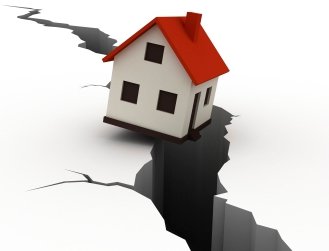 New Zealanders have one source of comfort as they dig through the rubble of collapsed buildings following the recent 6.3 magnitude earthquake: most residents have the proper insurance needed to rebuild.
New Zealanders have one source of comfort as they dig through the rubble of collapsed buildings following the recent 6.3 magnitude earthquake: most residents have the proper insurance needed to rebuild.
“Almost everyone in New Zealand has earthquake insurance, so they will one day recover from the devastation,” says Glenn Pomeroy, CEO of California Earthquake Authority, a publicly managed, largely privately funded organization that provides catastrophic residential earthquake insurance.
Some people mistakenly believe a standard homeowners policy will cover earthquake damage. But Michael Barry, spokesman for the Insurance Information Institute, says a standard policy will only cover some damages in the aftermath of a quake, such as from a fire. A special rider, or endorsement, is needed to collect on damages from the quake itself.
Few people in the United States have this rider, despite the history of earthquakes in some states and likelihood that another could occur. In California, residents can get earthquake insurance, which is a separate, companion policy to their homeowner’s policy, not a rider. Pomeroy says only about 10 percent of Californians have purchased this policy. In Missouri, which is observing the 200th anniversary of the devastating New Madrid earthquake this year, the percentages of people having a rider are higher, hovering around 30 percent to 45 percent, but drastically decreasing, John M. Huff, director of the Missouri Department of Insurance, says.

Insurance officials cite cost of premiums, high deductibles, complacency and the belief that their homeowner’s policy will cover any damages as reasons. Others mistakenly believe the federal government will bail them out, but federal loans must be repaid and grants are only for up to $30,000, Pomeroy says.
In Missouri, the earthquake rider costs up to $15 a month in higher risk areas, says Department of Insurance spokesman Travis Ford. However, the deductibles are 10 to 15 percent for the house itself and another 10 to 15 percent for its contents. “If a house is insured for $200,000, $60,000 would be deducted from the payment,” Ford says.
In California, premiums vary widely, according to the location, age of the house, number of stories and other factors. According to a premium calculator on the CEA’s Web site, the premium for earthquake insurance for a $400,000 home in San Francisco built in 1991 or later would be $1,252 a year with a 15 percent deductible. The cost is in addition to the cost of a regular policy, Pomeroy notes.
The CEA helps keep costs down by offering “mini policies” that exclude swimming pools, patios, detached structures and other non-essential items.
Pomeroy says proposed federal legislation would guarantee private market loans to state catastrophe-insurance programs to help them pay claims following a major disaster, which could bring costs down more.
To learn more, go to the California Earthquake Authority’s About Earthquake Insurance Page.












